Wheelgun Wednesday: Recreating Elmer Keith's Fabled 600-yard Deer Shot

Elmer Keith purportedly once shot a mule deer at 600 yards with a .44 magnum revolver. Instagram revolver aficionado @stateline_shootist decided to see how possible that shot really was. Is it possible, or is it a tall tale? Let’s find out.
Wheelgun Wednesday @ TFB:
- Wheelgun Wednesday: Charter Arms Coyote & Combo Series
- Wheelgun Wednesday: Gun Presented to The Man Who Killed Billy The Kid
- Wheelgun Wednesday: Charter Arms Target Mastiff Series
- Wheelgun Wednesday: Revolver Cartridge Spotlight - .30 Cal Revolvers
- Wheelgun Wednesday: Talo Distributor Exclusive - Ruger LCRx 9mm 3”
The Backstory
Elmer Keith needs little introduction. Though he has long since passed away, his impact on the shooting world remains. Keith grew up with a revolver in his hand and became one of, if not the, greatest wheel gun writers. One of his most legendary (and debated) stories was of shooting a wounded mule deer at 600 yards with a .44 magnum S&W revolver. This article is a great summary of the shot. The short version is that Keith was with a friend hunting deer with a scoped rifle. The friend wounded but did not kill a deer outright, and Keith dropped prone with his 6.5-inch S&W 29 to put the animal down. While his friend spotted with his rifle scope, Keith took four shots. When the deer was recovered it had been hit twice by Keith’s .44 mag.
Did this actually happen? I’m inclined to think so. I am nowhere near the handgun shooter that Elmer Keith was, but in my review of the 10mm Glock 40 MOS it was easy to hit out to 300 yards with a spotter. And while I love Glocks more than the next guy, the single action trigger on a quality revolver like the S&W 29 is much better than any striker-fired pistol. The .44 mag also pushes a heavier bullet that is less affected by wind than the 10mm.
Some of the doubts around this shot come from the sight picture. “How could you even see the target if you are holding off that high?” Well, Keith’s aiming technique was not the usual one. Rather than aligning the front and rear sight and holding that sight picture above the target, he put the rear sight below the front sight. The target is sill placed on top of the front sight post, but the rear sight is held below. How far down the sight or front ramp the rear sight sits sets the elevation. The following picture shows an example of that type of sight picture, though it is on a B-8 bullseye on an indoor range with a Smith & Wesson .357, it still gets the point across:
This technique makes it easy to adjust elevation in consistent increments while keeping the target visible.
The Equipment
@stateline_shootist sent me the following quote about the gun and ammo he used: “The load was a 265gr Keith bullet over a near max charge of Alliant 2400 running around 1230 fps…The Smith is a stock 4” 29-2 made in the mid 60’s.” The shorter barrel is a handicap compared to Keith’s 6.5-inch barrel, which would have provided a little more velocity and sight radius.
The target, a standard pepper popper, is substantially narrower than a mule deer, but the height is about right.
The so-called “Keith bullet” is not one I was previously familiar with. Here is a video that does a good job explaining the bullet design.
One key piece of gear that differs from Keith’s era is rangefinding technology. These days, laser rangefinders are affordable and ubiquitous. A set of Sig Kilo6 LRF binoculars were used to confirm the distance. Doubting the measurement of Keith’s shot is reasonable, given the tools of the era. That was not an issue with this attempt.
The Attempt
Without further adieu, it’s time for the shot:
Yes, 600 yards with a .44 mag wheelgun is possible! Here’s more from @stateline_shootist about the shot itself:
“Sight picture was my entire front blade and just a hair of the ramp held up above my rear sight, with the top of the front blade center mass on the target. And a bit right to account for wind drift.”
On the video you can see the plate fall well before the impact is heard. Could Elmer Keith have made a similar shot, with a similar gun? There will always be some debate about that, but this demonstration certainly counts toward it happening.
Getting this hit in three rounds was incredibly good shooting. Keith reportedly did not hit on the first round either. Even scoring one hit in several cylinders of rounds would be good in my book.
Let’s finish with some humble words from the shooter. “Just know that I ain’t tryin’ to be Elmer. He was the master, and pioneer of long range sixgunning. I’m just trying to showcase the true potential of these guns.”

AKA @fromtheguncounter on Instagram. Gun nerd, reloader, attorney, and mediocre hunter.
More by Daniel Y






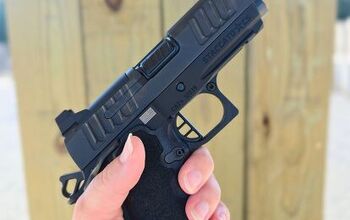


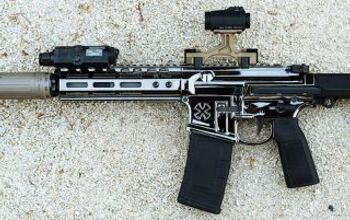
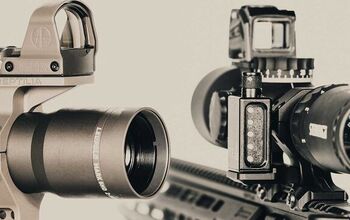


![[Partner 2025] Zastava M24, Modular Assault Rifle in 5.56x45](https://cdn-fastly.thefirearmblog.com/media/2025/09/28/15571/partner-2025-zastava-m24-modular-assault-rifle-in-5-56x45.jpg?size=350x220)
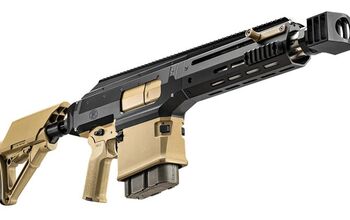

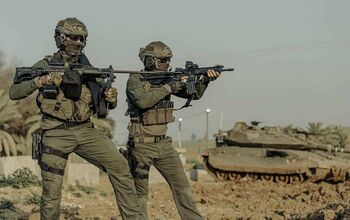
![[Partner 2025] New CN 20 Service Rifle From Romania](https://cdn-fastly.thefirearmblog.com/media/2025/10/27/10531/post.jpg?size=350x220)
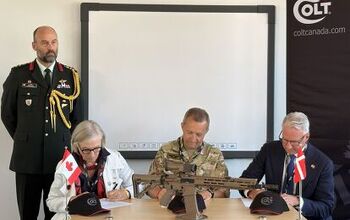




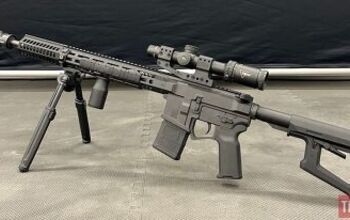
Comments
Join the conversation
Not to nit pick, but pretty sure Elmer was reclined with his revolver braced against his leg, I don't think he was laying prone. Great article, just clearing that up
My question is, why? Did his friend run out of ammo? I have no problem with handgun hunting at the proper distance, but was that the scenario?